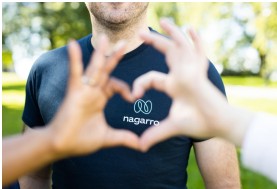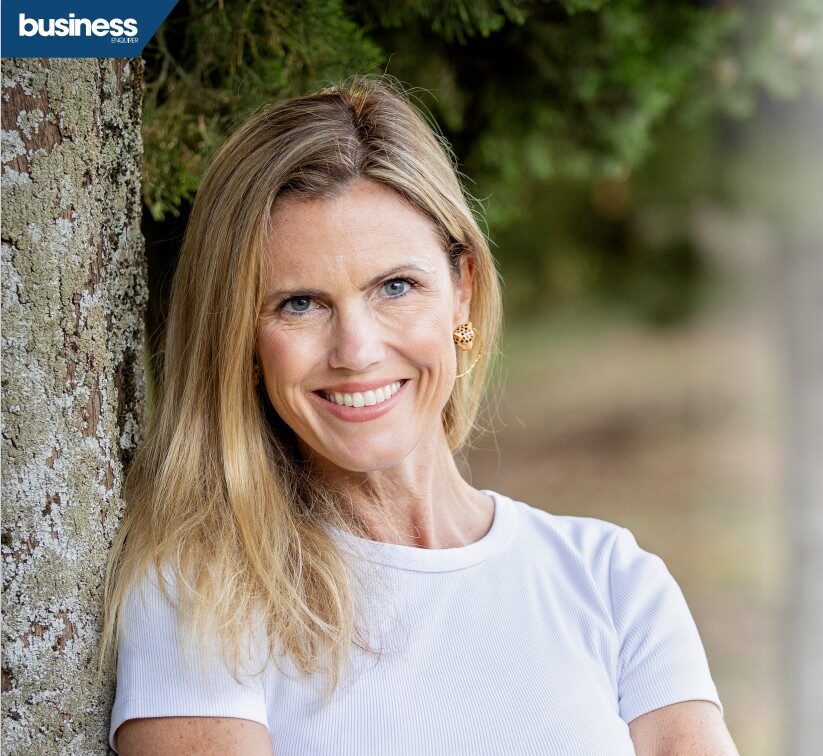Original business ENQUIRER article
At a time when sustainability has become both a strategic and moral imperative, few companies embody the intersection of environmental ambition and commercial intelligence quite like SCB Environmental Markets.At the heart of its operations is Bethanie Castelnuovo, who, after fifteen years with the organisation, now serves as both Chief Financial Officer and Executive Director.Castelnuovo’s leadership spans a widerange of disciplines—finance, operations,compliance and, crucially, sustainability—and her commitment to SCB’s mission to accelerate the global transition to a low-carbon future is nothing short of personal.
Speaking with Business Enquirer from SCB’s headquarters, Castelnuovo exudes clarity, drive and an evident passion for the work her teams are undertaking. “No two days really look alike at SCB,” she says. “And that’s one of the reasons I’ve been here so long. I thrive on variety, onthe challenge, and the sense that we’re building something meaningful.” She credits much of her fulfilment to the culture at SCB: collaborative, accountable,and deeply invested in delivering results that matter. “What I’m most proud of is the team and culture we’ve built,” she adds. “SCB was a natural fit for me from the very beginning.”
Castelnuovo’s path into sustainability was shaped by her early career in the Big Four, but it’s at SCB that she has been able to merge that corporate rigour with purpose-led innovation. One of her most hands-on contributions has been the development and leadership of SCB’s sustainability advisory team—a natural extension of the firm’s core activities in low-carbon commodities and voluntary carbon credit procurement. Castelnuovo and her colleagues noticed a consistent challenge among clients: an inability to account accurately for carbon emissions or report on climate actions with impact.“So, we built a team that could walk clients through the entire journey—from measuring baselines and setting targets,all the way to achieving net zero and reporting on it in a meaningful way.”

The emphasis throughout is on practical,real-world application. Castelnuovo has taken care to recruit professionals from accounting, technology and environmental backgrounds, ensuring the team is both multidisciplinary and grounded. That same pragmatism defines her leadership style. “Accountability is really important to me,” she says. “I have high expectations of myself and others,but I also believe in creating a space where people aren’t afraid to ask questions, solve problems together, and grow.”
As a woman in a senior leadership role,and one who works closely with women across tech and sustainability, Castelnuovo is deeply aware of both the progress and the gaps. “Sustainability tends to have a higher proportion of female leaders,but the challenge is often that teams are under-resourced or lacking a diversity of skills,” she explains. SCB has taken a proactive approach to this, building a high-performing AI and data team that is not only technically advanced but also female-led—an unfortunate rarity in the wider industry. “It matters,” Castelnuovo says plainly. “When new team members can look around and see successful women at different stages of their lives and careers, it’s easier for them to imagine themselves in those roles one day.”
That blend of diversity, forward thinking and operational effectiveness is perhaps most evident in one of SCB’s flagship innovations: Carbon AI. Launched as a data-driven analytics platform for global carbon markets, it’s a powerful example of how artificial intelligence can drive real world environmental impact. “Carbon AI delivers pricing data and intelligence to sustainability managers, wherever carbon

Imagine building IKEA furniture without an instruction manual.You have all the right pieces, and you know exactly how the finished product should look—but putting it all together feels overwhelming without clear guidance.
Many companies find themselves in a similar dilemma with AI: they’re convinced of its potential and can envision the transformative outcomes,yet without clear directions,assembling their AI strategy becomes daunting.
Organizations recognize AI’s transformative potential across the three critical pillars of growth:enhanced decision-making,streamlined processes, and elevated customer experiences. But, to effectively harness this power, they require a clear strategic blue print that illuminates the path forward. In this piece, Deepak Nohwal, Global Head of Sports & Gaming at Nagarro, dives into how three Gen AI-led playbooks, AI-powered immersive experiences, and intelligent ecosystems can transform organizational digital strategy, redefine customer engagement, and propel business growth.
AI-led playbooks: From Insights to Action
AI-powered playbooks enable organizations to coordinate intelligent strategies across platforms,facilitating multilingual interactions and seamlessly integrating various products and services to optimize overall business performance.
Before discussing their enterprise benefits, what exactly are these playbooks?
Gen AI playbooks are AI-powered,computation-friendly guides for solving complex B2B/B2C problems.These playbooks leverage Gen AI’s large language model infrastructure to:
- Integrate digital knowledge.
- Orchestrate existing ML models.
- Generate contextualized digital scenarios.
Playbooks are interactive, simulation capable, connected to digital twins, supported by large language models, and understandable in natural human language. They offer a catalog of actionable steps that can be activated across channels and devices, intelligently connecting products and services to maximize value.
An ideal playbook influences multiple organizational areas, transforming isolated applications into enterprise wide initiatives. For example, a sports club can use Gen AI playbooks to predict fan preferences, design personalized marketing campaigns, and optimize inventory, thus enhancing fan engagement and profitability.
Gen AI-led experiences: A new dawn
Generative AI-led experiences leverage Gen AI technologies to create highly personalized,interactive digital interactions. Businesses can deliver customized content, automate creativity at scale,and enhance engagement through tailored experiences. Solutions driven by advanced AI models rapidly generate text, images, audio, and multimedia content, significantly transforming customer experiences across industries.
Characterized by invisible yet immersive interactions and personalized responsiveness (“humanizing personalization”), these experiences are orchestrated by next-gen AI, enabled by wearables, distributed applications, and Web3 infrastructures. This silent AI revolution seamlessly integrates technology into our daily lives,enriching interactions through personalized digital avatars built on real-time data.
Harnessing agentic AI for intelligent ecosystems
Today, B2B and B2C customers demand personalized, seamless interactions throughout their journeys. Building intelligent ecosystems at scale requires converging data, advanced analytics,and human-like AI interactions.
Agentic AI independently reasons, plans, and executes tasks with minimal human intervention, using the REACT (Reasoning and Acting) approach to determine and perform actions logically through external tools. Multimodal models allow Agentic AI to handle diverse inputs—text, images, and data—and autonomously choose the best action method.
With these capabilities, organizations can improve revenue, customer satisfaction, and loyalty. For instance, in sports, an AI agent can deliver highly contextual real-time recommendations such as pre-and post-match analyses, personalized marketing nudges, contextual discounts, instant player performance insights, and predictive sales strategies.
“We must embrace an AI-led technological revolution to offer highly personalized, immersive,and interactive experiences to fans,coaches, and stakeholders in sports.”Said Deepak Nohwal, Global Head of Sports & Gaming at Nagarro, emphasizes,
Why CXOs must lead the AI revolution
For CXOs, adopting an AI-first mindsetis critical. Here’s how to start:
- Reimagine business models: Apply AI-led playbooks and AI agents for operational efficiency and growth.
- Enhance customer journeys: Create frictionless, personalized experiences across digital touch points.
- Foster a data-driven culture: Build robust data infrastructures enabling real time decision-making.
- Collaborate across functions: Align product, engineering, and business teams to maximize AI’s impact.
Partnering for success

Nagarro, an AI-first digital engineering company, helps enterprises navigate this transformative era. Leveraging AI and digital engineering, Nagarro enables clients to build resilience,growth, and innovation through a client-centric approach.
is being priced,” Castelnuovo explains. “Its advantage lies in lower access costs and deeper domain knowledge, but also in the fact that SCB has always been a digital first business. We haven’t had to pivot away from analogue practices—we were built for this.”
The technology behind Carbon AI is as impressive as its outcomes. Combining generative AI with a hybrid algorithmic approach, the platform draws on over20,000 data sources from more than200 countries, using both vector-based analysis and semantic understanding to process structured and unstructured data alike. This enables users to quickly identify areas for carbon reduction, benchmark their sustainability efforts, and anticipate emerging trends.
Its impact has already been felt across multiple sectors. One client used the platform to generate a detailed due diligence report on carbon projects,enabling faster and more transparent investment decisions. Another application—the Country Impact Index—analyses over a million data points across200 countries to guide investments in areas with the highest social and environmental need. “We’re removing barriers to participation in carbon markets,” Castelnuovo says. “Clients can find everything they need in one place.”
That ease of use aligns with SCB’s broader philosophy of pragmatic, results-oriented consulting. The company aims to offer something of a middle ground in the advisory space—more agile than the Big Four, but with a broader talent pool than boutique consultancies. “We want clients to feel comfortable picking up the phone without worrying about being invoiced for it,” Castelnuovo notes. “That agility is what allows us to stay close to the issues that matter most.”

This attentiveness is central to how SCB supports its clients in embedding sustainability into their operations. Castelnuovo describes the process as holistic, tailored and collaborative. “Our clients are at different levels of maturity when it comes to sustainability,” she says.“ So, our first step is always to underst and where they are. Then we evaluate existing initiatives, identify gaps, collect baseline emissions data, and align decarbonisation plans with their strategic goals.” SCB also benchmarks performance against peers, helping clients position themselves competitively while staying compliant with ever-changing regulations.
It’s clear that Castelnuovo views sustainability not just as a risk-mitigation exercise but as a commercial opportunity.“ Sustainability can absolutely go hand in-hand with commercial performance,” she insists. “We’ve seen clients achieve significant emissions reductions—45%in one case—while continuing to grow their business.” Other examples include improved energy efficiency, extended equipment lifespans, and IT system optimisation. “These aren’t just good for the planet,” she adds. “They’re also financially smart, quick to implement, and offer wins for both sustainability and finance teams.”
Measuring impact remains a cornerstone of SCB’s approach. Beyond obvious metrics like emissions and energy use,the firm also tracks indicators such as improved RFP performance, revenue influence, and growing demand for ESG related data. Castelnuovo acknowledges that some of these are harder to quantify but believes they’re vital to capturing the full picture of an organisation’s sustainability journey.
Partnerships have played a significant role in SCB’s ability to deliver on these ambitions. One such relationship is with Nagarro, a technology partner that has been instrumental in building Carbon AI.“ They’ve brought in technical expertise, natural language processing, systems integration… but more importantly, they share our values,” Castelnuovo says. “It doesn’t feel like a vendor relationship—it’s like they’re part of our team.”
The future, Castelnuovo believes, belongs to those who can combine innovation with integrity. AI, she says, is not a silver bullet, but a powerful enabler—particularly in an industry that must process vast quantities of messy, complex data to make sound environmental decisions. “Whether it’s predicting climate risks, tracking pollution in real time, or improving resource efficiency, AI can help us scale solutions faster than ever before.”
Castelnuovo sees a growing urgency among business leaders to act decisively, not reactively. “Sustainability transformation, powered by tools like Carbon AI, is really about future-proofing your business,” she explains. “Regulations are tightening, climate risks are becoming more expensive, and customers are increasingly choosing companies that choose to act. Innovation isn’t optional anymore—it’s the most practical way to stay competitive.”

For SCB, this means staying agile and internationally relevant by monitoring regulatory changes across all major markets. Internally, the firm draws on a blend of in-house knowledge and external partnerships to remain adaptable. Carbon AI itself is designed to be future-ready, capable of responding to shifts in reporting frameworks, policy developments, and market dynamics without needing to be rebuilt from scratch.
That flexibility is vital, especially given the diversity of industries SCB supports—from manufacturing to finance. While sector specific challenges exist, Castelnuovo points out that common frame works like the Greenhouse Gas Protocol enable cross-sector consistency. Carbon AI’s dynamic, customisable architecture further allows the platform to adapt to various regulatory and operational contexts.
But SCB doesn’t just ‘talk the sustainability talk’—they walk it internally as well. As a certified B Corporation, the company has integrated transparency, accountability,and environmental responsibility into its very structure. All SCB offices are ISO 14001 certified, and the firm has been carbon neutral since 2021. Staff are required to complete in-house environmental training, and diversity and inclusion are central to its culture—evident in initiatives such as the “She Can Be” network for women.
One of the more unique ways SCB connects its employees to its mission is through its long-standing partnership with the NGO build On. More than 60 employees have travelled to countries like Haiti, Malawi, Senegal and Nepal to build schools in underserved communities—many equipped with solar panels to serve as adult learning centres. Later this year, another group will head to Guatemala to construct new facilities and sanitation blocks. “It’s a powerful way for our people to see the impact they can have,”Castelnuovo says. “It makes the work real.”
In a world where corporate responsibility can often be reduced to surface-level initiatives, SCB stands out for its depth of commitment and clarity of purpose. With leaders like Castelnuovo at the helm—balancing strategy, technology and empathy—there’s little doubt the organisation will continue to shape what meaningful sustainability looks like for years to come.



